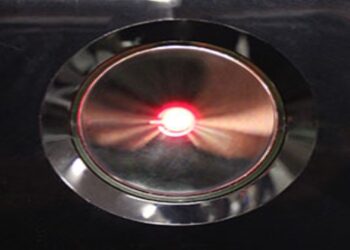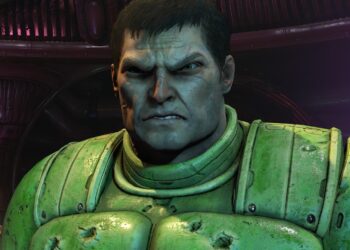Demystifying the Wii Reset Button: Your Tiny Savior for Nintendo’s Retro Console
The Nintendo Wii. A console that popularized motion controls. It transformed living rooms into virtual bowling alleys. Yet, even this innovative gem has hiccups. Meet the hero: the Wii reset button. You see it, that little red button. Perhaps it gathers dust. Have you pressed it? Do you know its purpose? Let’s uncover the mysteries of this tiny yet powerful button.
Wii Reset Button: Functionality and Effects – It’s More Than Just a Panic Button
What’s the reset button for? It’s your quick fix for glitches. Think of it as a nudge to the system. It tells your console, “Let’s restart.” Thankfully, it’s not a factory reset. It’s more like a digital reset for your Wii.
When you press that reset button, what happens? It reboots the console, plain and simple. If your game freezes, it’s your first step. It interrupts any problematic process. This button restarts system software. It’s quicker than a full power cycle. When you want to play, speed matters.
How to use this button? It’s simple. Nintendo designed it to prevent accidental presses during intense play. You need deliberate action. Here’s a pro-tip: Hold the ‘DOWN’ key on your Wii Remote. While holding it, press the ‘RESET’ button on the console. Voila! System reset started!
What if your screen is blank? Picture this: you power on your Wii, lights shine, yet your TV stays dark. No picture at all. Don’t panic! The reset button can still help. Even without visuals, the process remains the same. Power ON the Wii. Hold ‘DOWN’ on the Wii Remote. Press the ‘RESET’ button on the console. It’s a shot in the dark, but it often revives the system.
For another function, the reset button can refresh your Wii’s display rate. Experiencing flickering? The ‘DOWN’ and ‘RESET’ combo can fix video output issues. Think of it as a palate cleanser for your visuals.
Troubleshooting Wii Issues: Beyond the Reset Button
Sometimes, your Wii needs more than a reset. Let’s explore common Wii issues and fixes beyond that simple reset.
Reviving a “Dead” Wii? If your Wii seems dead, don’t assume it’s finished. Power issues often have easy fixes. The AC adapter, that bulky brick, is often the issue. Unplug it from the wall outlet and the Wii. Let it sit for two minutes. This discharges fully. Plug it back in and power on the Wii again. This simple power cycle often works.
Wii Won’t Turn On At All? If the power cycle doesn’t work, check for physical damage. Inspect the power cord and console. Frayed wires or cracked adapters are red flags. If you see damage, stop using it and replace the adapter. Overheating may cause shutdowns. Ensure proper ventilation. If it still doesn’t cooperate, consider repair or a new console.
Wii Remote Acting Wonky? The Wii Remote can sometimes misbehave. If unresponsive, try the battery trick first. Remove the batteries, wait a minute, then reinstall them. Give it time to wake up before pressing any buttons. Still no success? Let’s resync. Find the large red ‘Sync’ button on the front of the Wii. Hold it for fifteen seconds. This disconnects all remotes and accessories.
Then, open the SD card slot cover on the front of the Wii. You’ll find another red ‘SYNC’ button. Press and hold this for 15 seconds too. Now, resync your Wii Remotes one by one. This often clears glitches.
Internet Troubles? Wii Refusing to Connect? The Wii isn’t exactly cutting-edge for Wi-Fi connections. It only connects to 2.4 GHz networks, not 5 GHz ones. Ensure your router broadcasts a 2.4 GHz signal. The Wii prefers older Wi-Fi standards like 802.11 b/g. Check router settings for compatibility. Wireless security can also block connections. Change security type in System Settings to WPA2-PSK (AES). When in doubt, reboot your router and modem by turning them off, waiting a minute, and turning them back on.
No Picture on Your TV? Wii Not Connecting to the Display? Let’s return to basics. Is everything plugged in correctly? Ensure all power outlets are on. Sounds obvious, but easy to overlook. Check that your TV is set to the right input channel. AV, INPUT 1, HDMI 2 – switch until you see the Wii menu. Sometimes, solutions are simple.
Wii Not Reading Discs? The Dreaded Disc Read Error? This issue can be serious. If your Wii won’t read discs, it may indicate disc drive problems. Before panicking about a dead drive, clean the disc with a soft, lint-free cloth. Dust and fingerprints may cause reading issues. If cleaning fails and it happens with multiple discs, the drive may be failing. User-level repair isn’t feasible, requiring professional help or considering an upgrade.
Factory Resetting a Wii: The Nuclear Option
So, you’ve tried everything, yet your Wii misbehaves. Maybe you plan to sell or give it away and want to wipe it clean. That’s where the factory reset fits in. This is the “nuclear option” for your Wii. It erases everything: game saves, downloaded channels, and settings—all gone. It’s like your Wii is reborn, fresh from a digital womb.
How to Factory Reset an Old Wii? It’s a buried menu option, but here’s how to reset it to factory defaults. First, power on your Wii. From the main menu, navigate with your Remote to ‘Wii Options’ in the bottom right corner (it looks like a little Wii icon). Click on it, then select ‘Wii Settings’. You’ll see page 1 of System Settings. Click the blue arrow to go to page 3. On page 3, find the option: ‘Format Wii System Memory’. Select it. If you have Parental Controls enabled, you’ll be…
To start, enter your PIN. This will lead to confirmation prompts. Choose ‘Format’ three times to erase everything. Once confirmed for the third time, the formatting starts. Wait patiently; it could take a few minutes. When finished, your Wii returns to its out-of-the-box state.
What Does Formatting a Wii Actually Do? Formatting a Wii erases everything added. This includes saved game data, downloaded games, channels from the Wii Shop Channel, and personal settings. All gone. It’s a digital clean slate. Nintendo says that while most data is erased, some might remain. “Some information” remains vague, but a factory reset generally wipes most personal data.
Does Resetting a Wii Delete Everything? Distinguishing is vital. A reset uses the button to reboot the system. This does not delete data. Only a factory reset through ‘Format Wii System Memory’ erases saved games and downloaded content.
Understanding Wii Functionality: Bricks and Reboots
Now, let’s discuss technical terms in the Wii-sphere: “bricked” and “reboot.”
What Does a Bricked Wii Do? “Bricked” means the console is unusable. It is like a brick – you cannot use it. A bricked Wii often doesn’t respond. It may power on but show only a black screen or get stuck in a boot loop. Bricking happens due to software corruption. This often stems from bad updates or using homebrew improperly. Some bricks can be fixed with expert knowledge. But many bricked Wiis sadly become doorstops.
Can You Reboot a Wii? Yes! Rebooting means restarting the system. The reset button reboots it. Another method is to hold the POWER button until it turns off completely. If that fails, unplug the AC adapter, wait 15 seconds, and plug it back in. This is a “hard reboot,” cutting all power to force a restart.
Wii Remote Control: Taming the Wand
Finally, let’s return to the Wii Remote and control questions.
How Do You Reset Wii Controls? If your Wii Remote behaves erratically, the first step is often a reset. Remove the batteries, wait a minute, and then replace them. Give it a moment to wake up. Resync if needed with the console using the red ‘SYNC’ buttons. These actions typically fix minor glitches.
What Does the Red Button on the Wii Do? The red ‘SYNC’ button allows synchronization. Press and hold it on the console and on the Wii Remote or accessory to begin pairing. Holding the console’s ‘SYNC’ button for over 15 seconds will *disconnect* all synced devices and reset the connection list.
How to Recalibrate the Wii Remote Plus on Wii? If motion controls drift, recalibration may help. For the Wii Remote Plus, place it on a flat surface with buttons down for 10 seconds. This allows internal sensors to realign. After 10 seconds, check motion response. Repeat this if issues continue.
In conclusion, the Wii reset button is explained in a broader context of troubleshooting and functionality. It is small but vital when your Wii misbehaves. When this button does not help, you now have tips and tricks to maintain your retro console’s performance. Game on!










